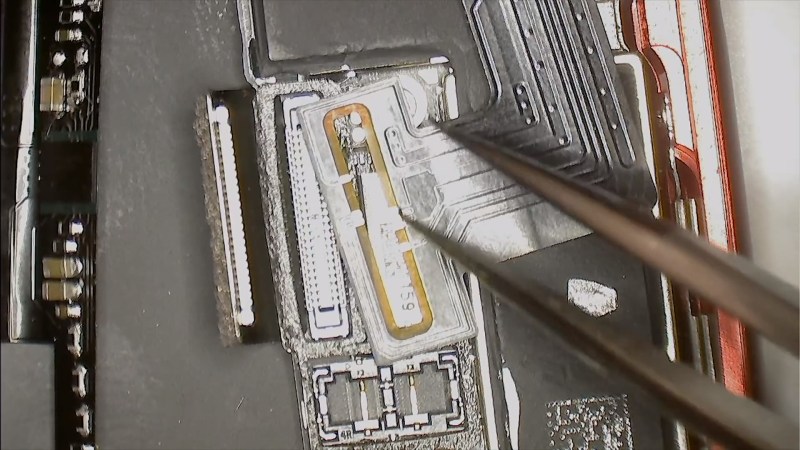We could watch cellphone teardown videos all day long. There’s something pleasing about seeing how everything is packed into such a small enclosure. From the connectors, to that insidious glue, to the minuscule screws, [Scotty Allen] has a real knack for giving us a great look at the teardown process. Take a look at his latest video which attempts to add wireless charging to an iPhone. I think there’s a lot to be said for superb lighting and a formidable camera, but part of this is framing the shots just right.
Now of course we’ve taken apart our fair share of phones and there’s always that queasy “I think I’m going to break something” feeling while doing it. It’s reassuring that [Scotty] isn’t able to do things perfectly either (although he has the benefit of walking the markets for quick replacement parts). This video is a pretty honest recounting of many things going wrong.
The iPhone 6 and 7 are not meant to have wireless charging, but [Scotty’s] working with a friend named [Yeke] who created an aftermarket kit for this. The flexible PCB needs to be folded just right, and adhesive foam added (along with a magical incantation) to make it work. That’s because the add-on is a no-solder job. Above you can see it cleverly encircles one of the mating connectors and relies on mechanical pressure to make contact with the legs of that connector. Neat!
In the second half of the video [Scotty] meets up with [Yeke] to discuss the design itself. We find it interesting that [Yeke] considers his work a DIY item. Perhaps it’s merely lost in translation, but perhaps [Yeke’s] proximity to multiple flexible PCB manufacturers makes him feel that this is more like playing around for fun than product design. Any way you look at it, the ability to design something that will fit inside that crazy-tight iPhone case is both impressive and mesmerizing. Having seen some of the inductive charging hacks over the years, this is by far the cleanest way to go about it.
We caught up with [Scotty] during last year’s Supercon. We may not be able to drop everything and move to Shenzhen, but hearing about the experience is just enough to keep us wanting to!















But iPhones have wireless charging already. It was added in the iOS 8 software update. It’s a feature called “Wave”. You put your iPhone in the microwave and switch it on for 60s in a 700W oven:
https://nakedsecurity.sophos.com/2014/09/23/no-apple-wave-does-not-let-you-charge-your-iphones-in-the-microwave/
same procedure known also as hush – baby calmer
-summoning moderators-
Eh? But I thought Apple were the first adaptors of features and others just followed? My android phone has had this for 4 years along with a swappable battery and a head phone jack.
No. Apple usually come later with a technology, but get it right and end up popularising it. That’s why Apple brought in the iPhone and now everyone has a smartphone, whereas only thouse of us on hackaday remember palm pilots and ipaqs.
Don’t worry, android phone makers have caught up and have removed all of those features.
I bet your phone didnt have the notch. Dont worry, your new android phone WILL!
https://www.youtube.com/watch?v=hGedskcjGow
Psst.. Android phones had notches before the iPhone.
The Essential phone is one that comes to mind.. others.. probably Huawei?
I like the effort he always goes to however considering the resistance from Apple on all things convenient why would you consider heading up their waterfall of faeces, they’re not the same company that nostalgia and fanaticism give them credit for why not move onto an open design platform and create for it instead bring interest through this dark version of advertising.
I assume he meant it was a DIY item in the sense that it is a product aimed at those wishing to perform a DIY upgrade / feature add-on… Much like the kits to retrifit a car’s built in electronics to boost performance at the expense of fuel economy, or add an alarm, or to break out the ECU’s factory reset input to a button on the dash to speed the rate at which it re-learns driving conditions at the start of a long highway drive or whatever… You can make a product (either a premanufactured add-on or a kit) to appeal to the wide segment between pure end-users and hardcore DIY folks who do things like design and build their own motherboards for homebrew computers or make custom PCBs for their projects rather than wire together a handful of breakout boards and other existing prefab modules.